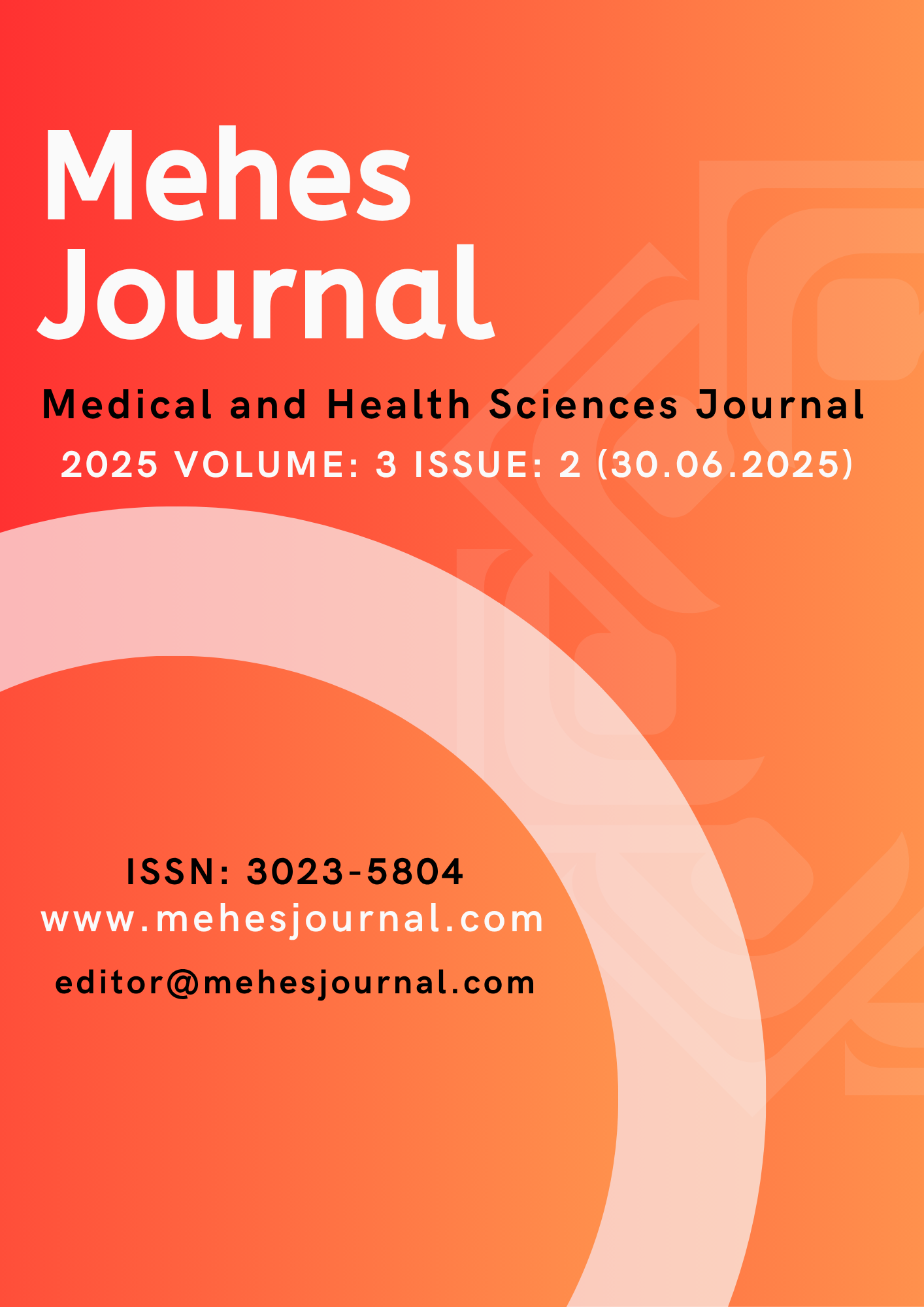The Importance of Blood Tests for Cardiovascular Health: What Do the Values Mean?
DOI:
https://doi.org/10.5281/zenodo.15775540Keywords:
Cardiovascular Diseases, Blood Tests, LDL, HDL, Biomarkers, Risk AssessmentAbstract
Cardiovascular diseases are one of the most common causes of death worldwide and significantly affect the quality of life of individuals. Blood tests play a critical role in the early diagnosis and risk assessment of these diseases. Biomarkers such as cholesterol profile (LDL, HDL, total cholesterol, triglycerides), blood sugar, HbA1c, troponin, high-sensitivity C-reactive protein (hs-CRP), fibrinogen, homocysteine, and lipoprotein(a) (Lp(a)) provide important information about cardiovascular health.
However, evaluating blood tests only according to reference ranges is insufficient. Age, gender, genetic predisposition, lifestyle, and other metabolic factors play a decisive role in the interpretation of biochemical results. In addition, misinterpretation of these tests in society can cause individuals to either ignore health risks or to have unnecessary concerns.
This study emphasizes the critical importance of correctly interpreting blood tests for the prevention and early diagnosis of cardiovascular diseases. It is stated that blood tests should be evaluated not only with laboratory reference values but also with the individual's general health status, lifestyle and genetic risk factors. In addition, encouraging individuals to interpret these tests under expert guidance is of great importance in terms of preventing incorrect evaluations and unnecessary concerns. Increasing awareness activities through health institutions, education programs and media in order to raise public awareness stands out as an effective strategy in reducing the burden of cardiovascular disease. In this context, the importance of early diagnosis, encouraging regular health checks and raising individuals' awareness about lifestyle changes are considered as a critical approach in terms of preventing diseases.
References
Gaidai O, Cao Y, Loginov S. Global cardiovascular diseases death rate prediction. Curr Probl Cardiol. 2023;48(5):101622.
Di Cesare M, Perel P, Taylor S, Kabudula C, Bixby H, Gaziano TA, Pinto FJ. The heart of the world. Glob Heart. 2024;19(1):11.
Global Cardiovascular Risk Consortium. Global effect of modifiable risk factors on cardiovascular disease and mortality. N Engl J Med. 2023;389(14):1273-1285.
Grundy SM, Stone NJ, Bailey AL, Beam C, Birtcher KK, Blumenthal RS, Yeboah J. 2018 AHA/ACC/AACVPR/AAPA/ABC/ACPM/ADA/AGS/APhA/ASPC/NLA/PCNA guideline on the management of blood cholesterol: executive summary: a report of the American College of Cardiology/American Heart Association Task Force on clinical practice guidelines. Circulation. 2018;139(25):e1082.
Small AM, Pournamdari A, Melloni GE, Scirica BM, Bhatt DL, Raz I, Natarajan P. Lipoprotein (a), C-reactive protein, and cardiovascular risk in primary and secondary prevention populations. JAMA Cardiol. 2024;9(4):385-391.
März W, Kleber ME, Scharnagl H, Speer T, Zewinger S, Ritsch A, Laufs U. HDL cholesterol: reappraisal of its clinical relevance. Clin Res Cardiol. 2017;106:663-675.
Ganjali S, Gotto AM Jr, Ruscica M, Atkin SL, Butler AE, Banach M, Sahebkar A. Monocyte‐to‐HDL‐cholesterol ratio as a prognostic marker in cardiovascular diseases. J Cell Physiol. 2018;233(12):9237-9246.
Nordestgaard BG, Varbo A. Triglycerides and cardiovascular disease. Lancet. 2014;384(9943):626-635.
American Diabetes Association. Standards of medical care in diabetes. Diabetes Care. 2020;43(Suppl 1):S14-S31.
Stark M, Kerndt C, Sharma S. Troponin. StatPearls. 2023.
Surma S, Banach M. Fibrinogen and atherosclerotic cardiovascular diseases—review of the literature and clinical studies. Int J Mol Sci. 2021;23(1):193.
Ganguly P, Alam SF. Role of homocysteine in the development of cardiovascular disease. Nutr J. 2015;14:1-10.
Lau FD, Giugliano RP. Lipoprotein (a) and its significance in cardiovascular disease: a review. JAMA Cardiol. 2022;7(7):760-769.
Goryacheva OA, Ponomaryova TD, Drozd DD, Kokorina AA, Rusanova TY, Mishra PK, Goryacheva IY. Heart failure biomarkers BNP and NT-proBNP detection using optical labels. Trends Analyt Chem. 2022;146:116477.
Ząbczyk M, Ariëns RA, Undas A. Fibrin clot properties in cardiovascular disease: from basic mechanisms to clinical practice. Cardiovasc Res. 2023;119(1):94-111.
Rodgers JL, Jones J, Bolleddu SI, Vanthenapalli S, Rodgers LE, Shah K, Panguluri SK. Cardiovascular risks associated with gender and aging. J Cardiovasc Dev Dis. 2019;6(2):19.
Reyes-Soffer G, Ginsberg HN, Berglund L, Duell PB, Heffron SP, Kamstrup PR, American Heart Association Council on Arteriosclerosis, Thrombosis and Vascular Biology; Council on Cardiovascular Radiology and Intervention; and Council on Peripheral Vascular Disease. Lipoprotein (a): a genetically determined, causal, and prevalent risk factor for atherosclerotic cardiovascular disease: a scientific statement from the American Heart Association. Arterioscler Thromb Vasc Biol. 2022;42(1):e48-e60.
Rankinen T, Sarzynski MA, Ghosh S, Bouchard C. Are there genetic paths common to obesity, cardiovascular disease outcomes, and cardiovascular risk factors? Circ Res. 2015;116(5):909-922.
Okura M, Ogita M, Yamamoto M, Nakai T, Numata T, Arai H. Health checkup behavior and individual health beliefs in older adults. Geriatr Gerontol Int. 2018;18(2):338-351.
Hurst JW, Morris DC, Alexander RW. Hurst's the Heart, 14th Edition: A Cardiovascular Medicine Reference. McGraw Hill Professional; 2017.
Downloads
Published
How to Cite
Issue
Section
License
Copyright (c) 2025 MEHES JOURNAL

This work is licensed under a Creative Commons Attribution 4.0 International License.










